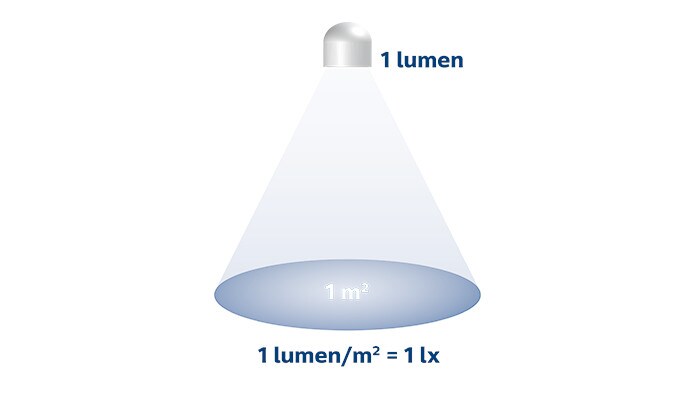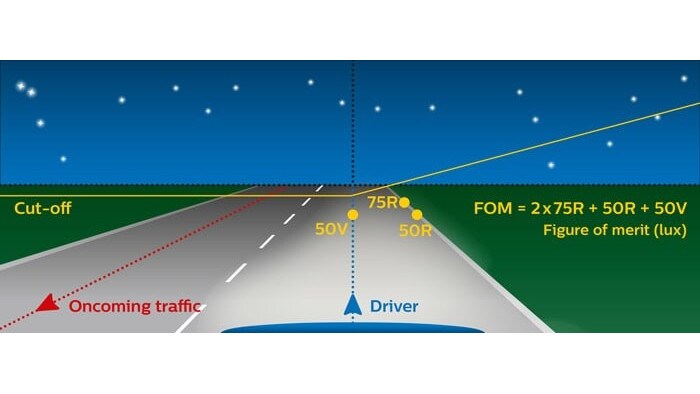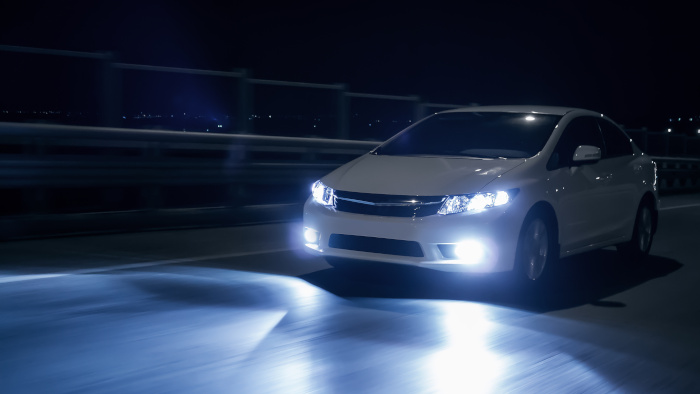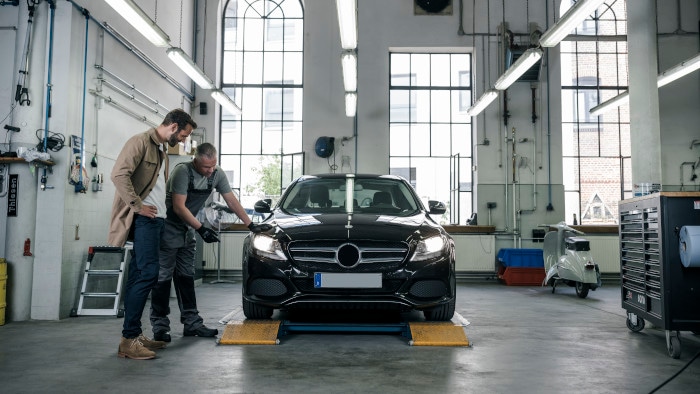Improve your lights easily
Simply replacing the bulb, for example with a H4 or H7 X-tremeVision, can generate a light beam that is up to 130% brighter and 45 metres longer. Here is a brief description of how these bulbs work. Difference between lumen and lux
Despite lighting technology such as Xenon and LED, most cars on the road currently still use halogen lights. Questions about better lighting solutions regularly arise on the forum, but there are simple and legal ways to improve halogen headlights.

Figure 1: Lumen and lux The light stream is measured in lumen. The light stream is the total amount of light that a bulb emits in all directions. By contrast, lux is the intensity of the light that actually reaches the road. The difference is important because the light stream for each type of bulb is precisely defined in the ECE regulations and can only vary within very narrow tolerances. For example, according to ECE R37, an H7 12 V bulb must have 1500 lm +/-10%. Therefore, if more light is to reach the road, the existing amount of light must be utilised better and more effectively. The important distance between 50 and 75 metres In order to illuminate the driver's own lane further, the dipped beam bundle designed for right-hand traffic is longer on the right side. This asymmetric dipped beam can also be clearly seen at the point where the cut-off line rises, when the vehicle is facing a light-coloured wall with the headlights switched on. What is important here is that the road at a distance beyond 50 metres is illuminated as brightly as possible. This enables drivers to see objects and dangers in plenty of time and to react accordingly.

Figure 2: Asymmetric dipped beam The most important measuring points are: • 50V = 50 metres in front of the vehicle • 50R = 50 metres on the outer edge of the carriageway (for right-hand traffic) • 75R = 75 metres on the outer edge of the carriageway (for right-hand traffic) The FOM value (Figure of Merit) is now the commonly accepted term to measure the quality of the dipped beam. It is calculated from the sum of the light intensity at all measuring points, with the point at 75 metres carrying double weight: • FOM [Lux] = Light intensity (2 x 75R + 50R + 50V) The higher the FOM, the better the light. Of course, this assumes that the maximum permissible lighting values (glare values) are not exceeded above the cut-off line. How an X-tremeVision works Bulbs like the Philips X-tremeVision, which shines more light onto the road, have a filament that is smaller but brighter. As the luminous surface is smaller, the total amount of light does not change much. However, the headlight can use the available light more effectively to direct it to the distance range described above. The result is a higher FOM: Up to 130% more brightness and a range that is up to 45 metres longer. Of course, this is always somewhat dependent on the headlight system used. The brighter and hotter filament is also the reason why these particularly powerful bulbs always have a shorter service life than standard bulbs. Philips uses a special, particularly pressure-resistant quartz glass for all its bulbs. A particularly high gas fill pressure of up to 15 bar in the bulb is at least partial compensation for the drawback of its short service life. The 15 bar relates to the pressure when the bulb is cold. When in operation, the pressure within the glass bulb is up to three times greater. And finally, a note about bulb installation We are frequently told not to touch halogen bulbs with bare hands, but the biggest problem here is not the oils that can burn into the glass and cause damage, as this would require an enormous level of contamination. What is much worse is even the smallest amount of contaminants that evaporate in the headlights and deposit themselves on the sensitive mirror surfaces. This can cause an unsightly coating to build up relatively quickly, which will affect the lighting quality at some point. So the best thing is to always wear suitable gloves.
You might also be interested in:
-
![Lighting and Signaling]()
Lighting and Signaling
Click here to learn more -
![Bright connections]()
Bright connections
Click here to learn more -
Good bulbs, bad bulbs
Click here to learn more -
![Change bulbs in pairs]()
Change bulbs in pairs
Click here to learn more


